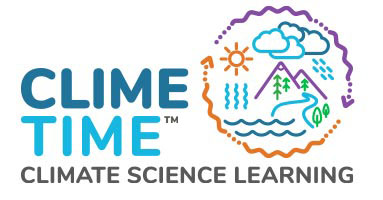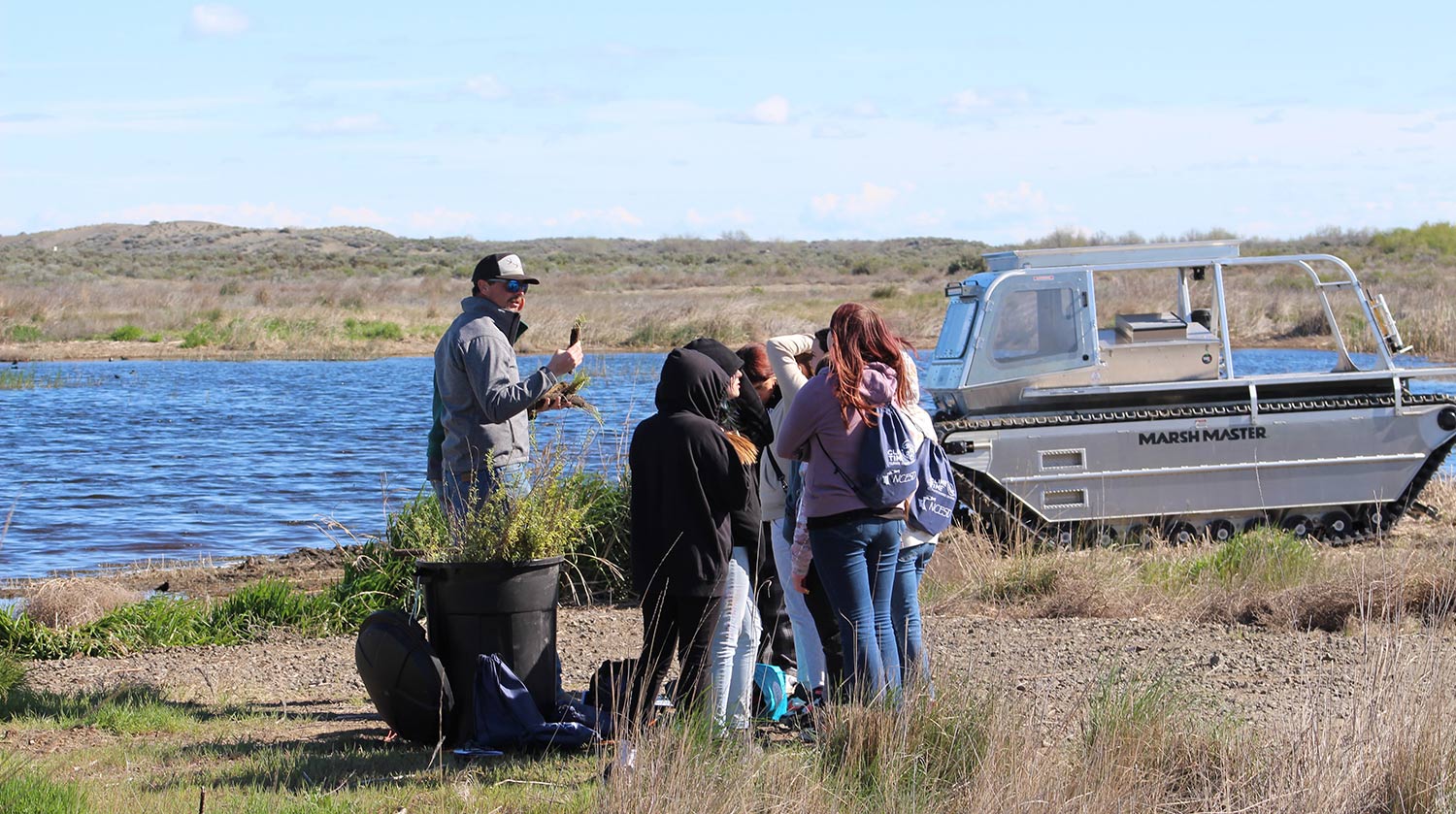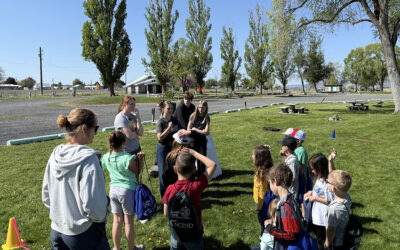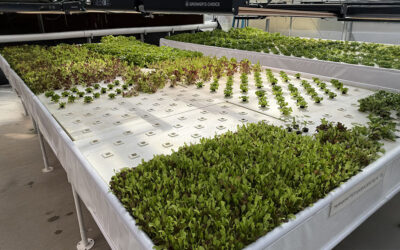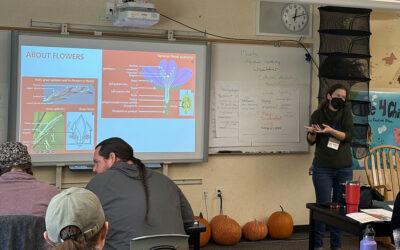Feet were running, students were talking, the sun was shining as over 400 students made their way to the big tents to kick off their STEAM in the Field events at various
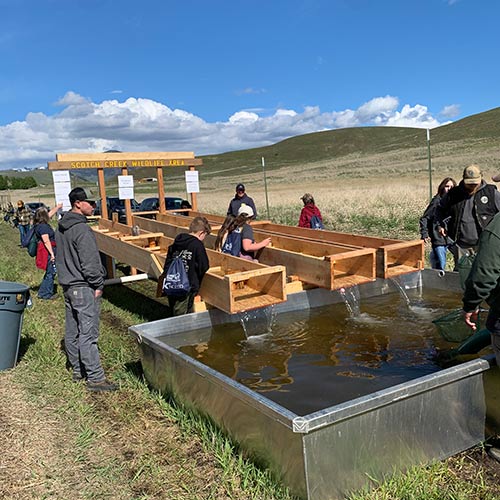
Students explore stream flow at Scotch Creek Wildlife Area and how enhancements can slow water to slow water and increase habitat for endangered species like Sharp tailed Grouse.
locations across north central Washington. This is the fourth year that NCESD has been able to support teachers in bringing their students alongside professionals in the field to learn about how scientists work in the outdoors, stewarding our public lands and the flora and fauna within it.
Utilizing Washington Department of Fish & Wildlife public land, we partner with a number of government and community based organizations as well as individuals to host one day events for 5th, 6th and 7th grade students from 7 different school districts in activities that include planting native plants, identifying native plants, building beaver dam analogs, studying stream flow and water volumes, engineering ways to slow water, studying soil erosion, art, and identifying wildlife. Students aren’t learning these things from teachers. Although some work is done in the classroom in preparation for the day in the field. They are learning from professionals that do these things for a living. Activities are hands-on and engaging. Students have journals where they can capture data and their thinking at each station they visit. Feedback from students, teachers, and participating professionals is very positive. We are fortunate to live in a place where so much science is happening in our rural communities to share with students.
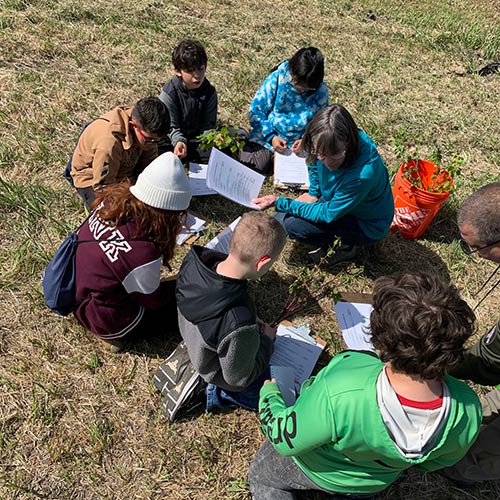
With help from retired wildlife biologist, Julie Nelson, students learn to identify native plants in the local ecosystem before planting some of their own.
The STEAM in the Field activities are aligned with the NGSS performance expectations and the driving questions for each event connects to the work being done in that particular location as well as climate related topics.
We want to thank all of the people that make the events possible: WDFW staff from the Scotch Creek Wildlife Area, Sinlahekin Wildlife Area, Foster Creek West Wildlife Area, Columbia Basin-Desert Unit Wildlife Area, Colville Confederated Tribes Fish and Wildlife, Wade Troutman, Ray Rodriguez, Julie Nelson, Okanogan Conservation District, Foster Creek Conservation District, Columbia Basin Conservation District, Washington State Parks, and participating Washington State Fish and Wildlife Region 1 and 2 staff.
